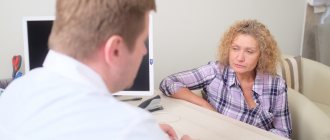What is obsessive-compulsive disorder and what are its causes?
Obsessive-compulsive disorder (also known as obsessive-compulsive disorder (OCD)) is, as the name suggests, a disorder characterized by repetitive, obsessive thoughts (obsessions) and/or actions. (compulsions) that are difficult to resist, because an attempt to abstain from them leads to increasing anxiety, worry, tension, and suffering.
Picture 1. pixabay.com
addictive
The incentive for exposure and response prevention is that individuals will be able to tolerate, manage, and control their disorders without obsessive states. They do this through a process called cause habituation.
This means showing the individual that the reasons for their anxiety are not so bad, and that nothing will happen if they, for example, touch the elevator buttons. With this treatment, reality breaks through the disturbing illusory expectations again and again until they are finally freed from fear completely.
So, if a person with OCD always performs their reps, then there is no way to disprove their unrealistic thoughts. This is because they believe that their compulsion is what keeps bad things from happening. However, the reality is that their fears do not come true because the reasons are irrational.
How does obsessive-compulsive disorder manifest?
Obsessive thoughts (obsessions) - have a pronounced, intense nature and are almost always perceived by the patient as “unpleasant”, “shameful”, “absurd”, “unwanted”. Although obsessions appear against the will and cause resistance in the patient, they are, however, perceived by him as his own thoughts. Obsessions can be divided into the following categories:
● obsessive uncertainty - most often concerns ordinary things - e.g. repeated and constant, despite repeated and various checks, uncertainty about: whether the door was closed, whether the lights were turned off, whether the water taps were closed, whether objects were laid out correctly and evenly, whether hands were washed correctly and effectively, etc.;
● intrusive, unwanted and often counterintuitive thoughts of a blasphemous, obscene or vulgar nature - often amplified in places or circumstances in which they are particularly inappropriate (eg church, prayer, meeting with loved ones, etc.);
● obsessive impulses - e.g. intense, overwhelming thoughts about shouting or undressing in public, doing compromising acts, or behaving aggressively towards people towards whom we have no bad intentions and who are close to us (e.g. pushing a mother, kicking a child, excessively lean out of the window, etc.) - which is significant, with obsessive-compulsive disorder these impulses are never realized by the patient, although they are accompanied by strong anxiety that they will soon come true, and intense attempts to prevent this;
● rumination - continuous, hours-long, useless, pseudo-philosophical and difficult to interrupt “chewing” of one topic, question or thoughts without the ability to make decisions and reach constructive conclusions;
● obsessive fear of dirt, impurity, contamination of oneself and others;
● obsessive need to maintain ideal, unrealistic order, symmetry, a certain arrangement of objects in the environment, etc.
Obsessive actions (compulsions) , like obsessions, are felt by the patient as meaningless and awkward or embarrassing, but at the same time inevitable - it is difficult to resist them. They can take different forms:
● obsessive checking (of doors, water taps, objects, etc.) as a response to obsessive uncertainty;
● repetitive cleaning, washing (eg hand washing), putting down, etc. - associated with uncertainty whether these actions were performed correctly, in accordance with the self-imposed procedure and whether they were effective;
● repeated correction, arranging, arranging, associated with an obsessive desire for order, symmetry, a certain arrangement of objects;
● complex actions, reminiscent of bizarre rituals, which the patient is obliged to perform in order to prevent increasing tension or the threat of disaster, albeit with very incredible consequences, despite the fact that he is aware of the meaninglessness of his actions and thoughts (for example, “I must hop on one leg twice around the car in the parking lot, otherwise something bad could happen to my daughter”);
● forced collection and hoarding of objects.
Obsessive-compulsive disorder can sometimes be accompanied by other additional symptoms:
● symptoms of anxiety disorders – e.g. panic attack or generalized anxiety;
● symptoms of depression – treatment-resistant or long-term untreated obsessive-compulsive disorder can be a source of significant distress for the patient and can also cause very serious disruption to their functioning at home, work, school or university. The response to such consequences can lead to low mood, decreased self-esteem, the development of feelings of helplessness and hopelessness, and even the development of a full episode of depression;
● depersonalization and derealization - sometimes the anxiety and tension accompanying obsessive states or attempts to resist them are so great that they lead to a periodic feeling of unreality by the patient - he may have the impression that there is no full contact with the world, that the people and objects around him are unreal, artificial, that they are like decoration (derealization) or also that his thoughts are separated from him, as if they did not belong to him, that his feelings, emotions, actions or parts of his body are not his (depersonalization) - these symptoms are usually very disturbing to the patient and may create fear of “madness”, impending “madness”;
● Tics are involuntary, repetitive movements (e.g. blinking eyes, shrugging shoulders, facial grimaces, etc.) or vocal phenomena (clearing throat, barking, hissing, etc.), just as compulsions are felt as something before something that is impossible or very difficult to resist;
● Aichmophobia is an increased fear of sharp objects combined with avoidance of contact with them and hiding them;
● mysophobia - increased, excessive fear of dirt, combined with an increased need to avoid contact with it, remove it and avoid being “desecrated” by it;
● bacillophobia - a fear of germs similar to mysophobia.
Symptoms
OCD is a mental disorder that can only be diagnosed by a medical specialist. Only a psychotherapist or psychiatrist can give a final conclusion. To accomplish this, a variety of methods are used.
There are certain symptoms of OCD that indicate the presence of the disease. Those suffering from the disorder can detect them on their own or with the help of family and friends:
- Many begin to bargain with their own conscience and subconscious. Convince yourself of the presence of symptoms of a non-existent disease or re-check the closure of the tap, rearrange things, check the door, then the problem will disappear. In fact, there is a movement in a circle. Obsessive rituals only strengthen specific sensations in the brain, forming an image of a dangerous picture that really takes place.
- The need to perform repetitive manipulations and actions increases many times over. But there is a certain “but” here. If a healthy person has the habit of washing their hands several times for no apparent reason, this does not mean at all that they have OCD. Perhaps he is simply afraid of getting infected and getting sick. Then you need to be aware of whether there is a willingness to give up repetitions for a certain amount of remuneration. If so, then it's just a bad habit. Otherwise, this is really a deviation that requires psychological help or psychotherapy.
- It is difficult to convince an individual that there is no threat. They are attached to their fears, so no amount of belief helps them become more confident. They are ready to counter any admonitions with the phrases “yes, but...”. The result is anxieties that continue to torment and torment the soul, which only intensify over time even when the fears are not realized.
- A clear awareness of when it started and how long it lasts. Control is not weakening at all.
- An overwhelming feeling of anxiety. But it must be borne in mind that it has an established basis. True, in a healthy situation a person is able to overcome these factors. He knows how to control and suppress them. Whereas a person suffering from OCD cannot do this on their own.
Despite the symptoms and signs, there is absolutely no need to despair. These deviations can be corrected. This is done through specialists who need to be contacted on time and in specialized clinics. They can be found on the Internet, and on the site you can know all the necessary situations.
It is worth remembering that the sooner help is accepted, the faster and more effectively it will be possible to get rid of the problem.
The symptoms may be alarming, but the final diagnosis is made exclusively by a specialist who can determine obsessive-compulsive disorder based on the symptoms present and prescribe adequate treatment.
It is important to understand that there are differences between normal and pathological thoughts. They do not lie in the content itself, but in the patient’s attitude towards them.
According to recent studies, in the vast majority of cases, that is, 90% of the adult population, there are thoughts that are of a fixated nature. They concentrate too much attention, but do not suffer from cognitive behavioral disorders.
What happens during the pathological process? What dependencies are formed and to what extent, and how do they affect health? The significant difference is that a trigger (trigger - irritant or so-called trigger) gives rise to the appearance of obsessions in the form of involuntary thoughts. The process is still poorly controlled by the individual himself, which is why anxiety manifests itself in him. But the body, trying to avoid self-destruction, causes compulsive manipulation. They consist of repeating the same rituals.
An interesting fact is that the fears that the patient experiences do not come true only for the reason that the individual triggers compulsive actions. And the absence of a negative manifestation does not mean that fears are unfounded or that the person is innocent.
Compulsion has a short spectrum of manifestation - it is designed to smooth out fears or reduce the level of discomfort. If the disease is not treated, then in the long term, compulsive behavior maintains fears and a vicious circle arises, which can lead to the persistent formation of the disease.
Analogies of OCD can be drawn with panic attacks and conditions, as well as agoraphobia.
What to do if symptoms of obsessive-compulsive disorder appear?
If you notice symptoms or suspect you have them, you should contact a psychiatrist. It is inappropriate to put off going to the doctor. Firstly, the symptoms are very burdensome, interfere with functioning and cause great suffering, and secondly, if they persist for a long time, they can become fixed. This happens, among other things, because a person suffering from obsessive-compulsive disorder wants to cope with unpleasant feelings and takes actions that provide only temporary relief, but ultimately maintain and strengthen some of the mechanisms of maintaining the disorder. Such actions are e.g. avoid specific situations or engage in rituals and activities that serve to reduce mental stress. Starting treatment allows you to stop this vicious circle, for example. through the use of cognitive-behavioural therapy (CBT). In addition, prompt initiation of treatment minimizes the risk of complications such as e.g. depression.
What it is?
Obsessive-compulsive disorder is a category of mental disorders that can affect not only adults, but also children. It is characterized by the appearance of:
- Obsessive thoughts and specific behavior in character. Otherwise it is called obsession. They are repeated with regularity, and no one is able to control them and cope with them on their own.
- Actions that are quite tiresome are compulsions. They are compulsive actions and manipulations of behavior or thoughts that are repetitive in nature. They are a kind of response to obsessions, since by performing certain rituals, the patient relieves a high level of anxiety for a short period of time (as if he calms down).
How does a doctor diagnose obsessive-compulsive disorder?
The psychiatrist bases his diagnosis, first of all, on an accurate history collected from the patient, as well as after examining his mental state, consisting of questions asked, conversation and observation. The doctor may also ask for additional psychological testing and provide or have the patient complete specialized questionnaires that measure the severity of symptoms. The doctor will probably also decide to conduct basic biochemical tests (blood) to assess the general state of health and conduct the so-called. differential diagnosis. In some cases, it may also be decided to conduct additional studies - electroencephalography (EEG), computed tomography or magnetic resonance - and consult a neurologist.
What treatments are there for obsessive-compulsive disorder?
Treatment for obsessive-compulsive disorder is a long and complex process. A very important element is the patient's patience, because obsessions and compulsions tend to respond slowly and gradually to the treatment methods used. To treat obsessive-compulsive disorder, medications, psychotherapy, and additional techniques are used. People experiencing mild symptoms can only be treated with psychotherapy or pharmacotherapy. In case of severe symptoms, it may be necessary to use these methods simultaneously. The main drugs used in the pharmacotherapy of obsessive-compulsive disorder are antidepressants: selective serotonin reuptake inhibitors (eg sertraline, paroxetine, fluvoxamine, citalopram, fluoxetine), as well as tricyclic antidepressants - clomipramine. Pharmacotherapy lasts from several months to many years. Sometimes an attempt to discontinue medications leads to a relapse or intensification of obsessions - in this case, the patient takes the medications for life. Pharmacological treatment usually uses much higher doses of antidepressants compared to the doses recommended for patients with depression. Sometimes, to reduce the intensity of anxiety and tension, at the beginning of treatment, the doctor adds sedatives or sleeping pills to antidepressants. For concomitant tics, an antipsychotic drug (eg haloperidol, risperidone) is added to the antidepressants. The best documented psychotherapeutic treatment for obsessive-compulsive disorder is cognitive behavioral therapy. During therapy sessions, the patient learns to tolerate the effects of stimuli that cause or intensify obsessions, and also learns to gradually refrain from obsessive actions. Some patients may also benefit significantly from psychodynamic psychotherapy.
What needs to be done after finishing treatment?
The duration of treatment, including medication, is determined individually. Once appropriate treatment has been completed, it may be indicated to repeat the skills and exercises learned during CBT.
As with other mental disorders, it may be helpful to take care of general mental hygiene and health—concern for your overall development, developing stress management and problem-solving skills, developing positive interpersonal relationships, avoiding the use of psychoactive substances (drugs, alcohol), proper nutrition, physical activity. An important issue is also the acquisition of the ability to recognize signs of relapse of the disorder and prompt pharmacological and/or psychotherapeutic intervention when it occurs.
A detailed algorithm of action is determined by the doctor, selecting it for each patient.









